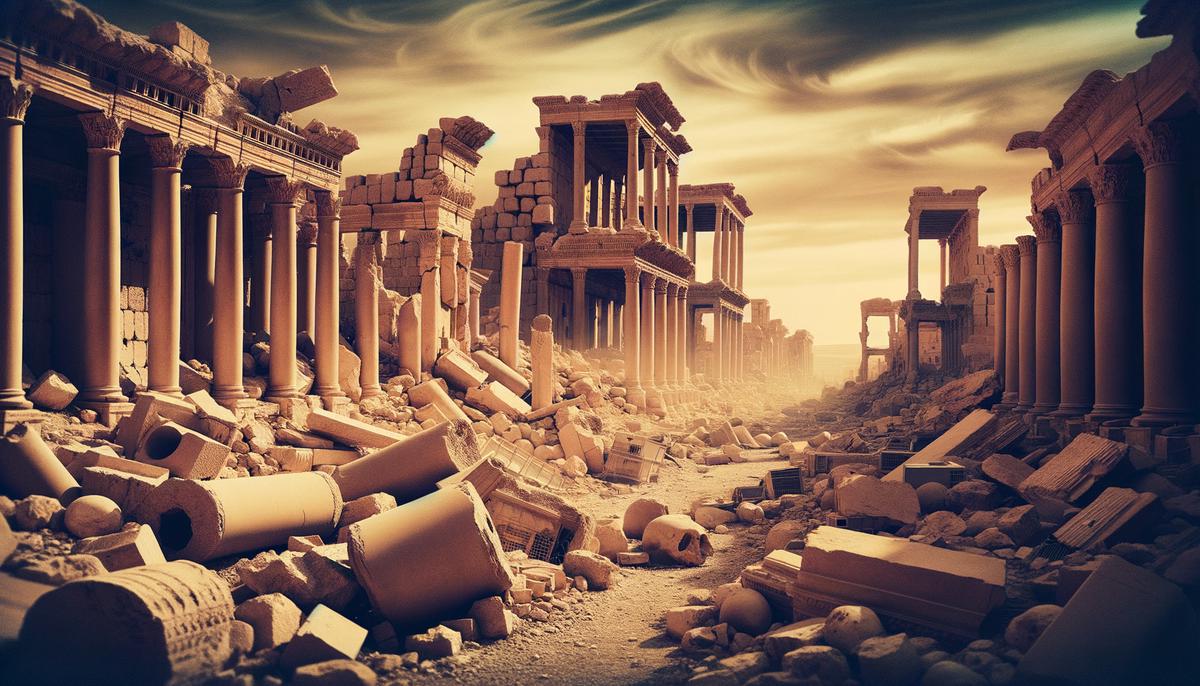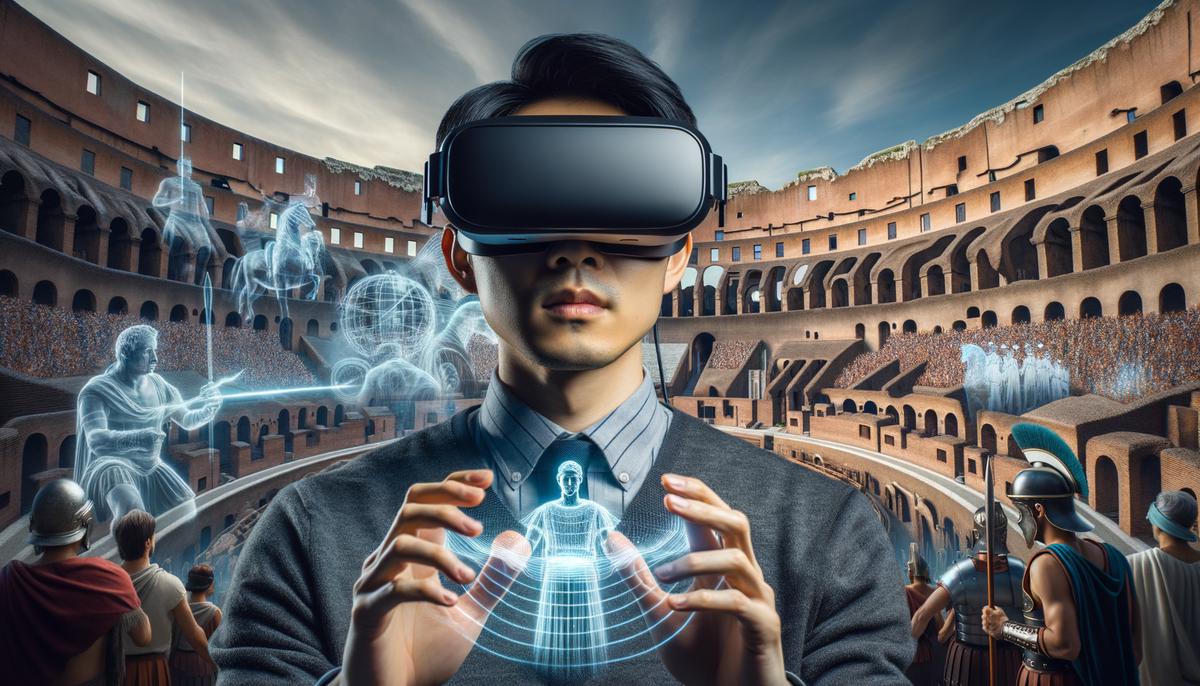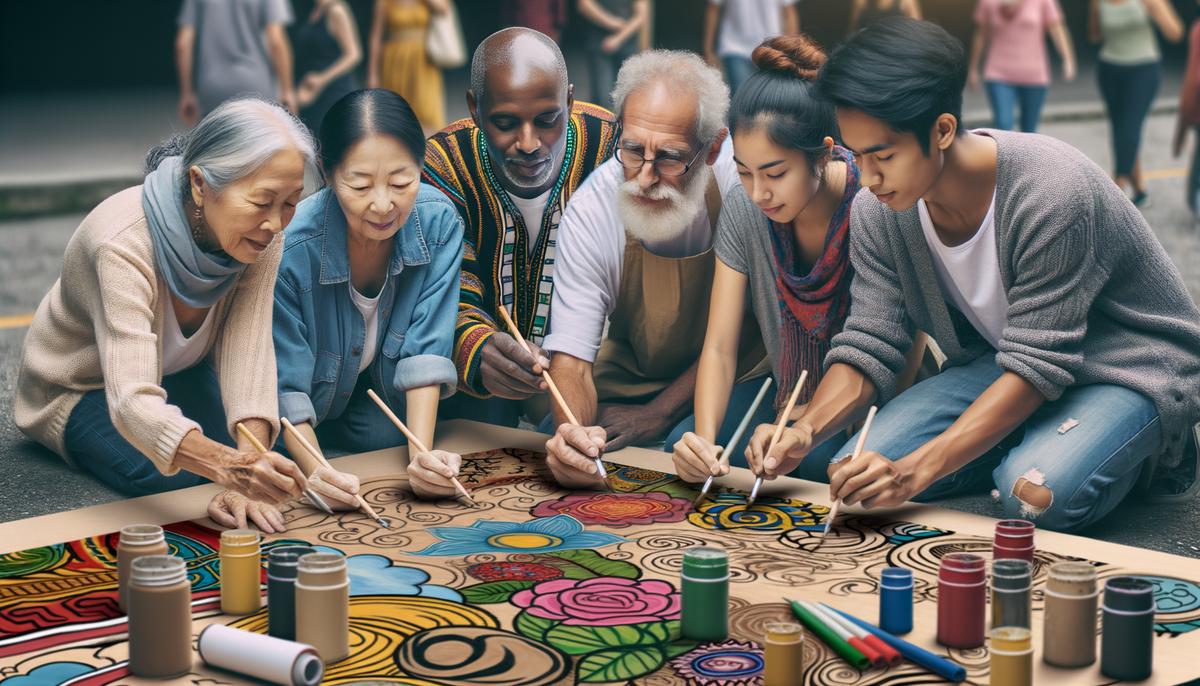Defining Cultural Heritage
Cultural heritage encompasses more than historical relics or treasures; it reflects a community's past actions and societal evolution. Experts categorize cultural heritage into two main types: tangible and intangible.
Tangible heritage, or physical cultural property, includes artifacts, monuments, and buildings that can be seen and touched. These artifacts capture moments of human ingenuity and narrate stories through art forms like:
- Pottery
- Sculpture
- Ancient ruins
Intangible heritage represents the spirit of a community through spoken words, movements, sounds, and other nonmaterial forms. This includes:
- Traditions
- Languages
- Music
- Festivities
- Crafts
These elements might not leave a physical mark but are vital for cultural expression and passing down knowledge to younger generations. Folklore, dance forms, and theater productions combine tangible and intangible elements to reflect cultural beliefs and historical events.
Each element of cultural heritage, whether displayed on canvas or enacted through festivals, preserves communal knowledge, tales, and legacies. By echoing past accomplishments and struggles, cultural heritage promotes societal continuity and creates identity-focused beacons for future generations. Cultural heritage is a dynamic dialog between past and future where the arts play a crucial mediating role.
Legal Frameworks and Ethics
International and national laws safeguard cultural heritage and ensure the ethical handling of cultural items. The 1970 UNESCO Convention on the Means of Prohibiting and Preventing the Illicit Import, Export and Transfer of Ownership of Cultural Property aims to curb illicit trafficking. It emphasizes the need for signatory countries to foster national measures that protect sites through legislation and administrative measures.
Local laws harmonize with international agreements to address specific issues like unauthorized excavations and looting. National legislation defines ownership, intake procedures, and penalties that consider the cultural significance of artifacts at risk.
Museums continually evaluate ethical practices, particularly in acquisition and display of cultural heritage. Provenance—the full historical ownership record of an item—is crucial. Institutions must ensure that items were acquired without violating the 1970 UNESCO Convention or other relevant statutes. Repatriation, the return of cultural properties to their countries or communities of origin, is an important legal and ethical consideration. It affects national pride, identity preservation, and reconciliation of past injustices.
Legal instruments, museum policies, and repatriation efforts aim to honor and rejuvenate our shared heritage. By adhering to scrupulous practices and fostering dialogue around cultural property, we enhance multinational respect and collaboration. Communities worldwide can reclaim integral narratives distorted or obliterated through unjust appropriations, enriching the tale of human civilizations across eras.
Impact of Conflict on Heritage
Conflict zones pose significant threats to cultural heritage, resulting in irreversible damage to historical artifacts, sacred structures, and intangible expressions. The impact of conflict impairs not only physical monuments but also the cultural identity and resilience of affected communities. International responses and initiatives aim to protect and preserve these cultural legacies.
The ancient city of Palmyra in Syria, a UNESCO World Heritage Site, suffered extensive damage at the hands of ISIL, which destroyed treasured monuments like the Temple of Bel and the Arch of Triumph. Such losses resonate worldwide, prompting discussions on the need for proactive measures to safeguard cultural assets.
Organizations like the International Alliance for the Protection of Heritage in Conflict Areas (ALIPH) mobilize efforts and funds to ensure that threatened cultures can shield their heritage artifacts. ALIPH's initiatives range from emergency protection measures to crucial restoration projects in areas hardest hit by conflict.
The Smithsonian Cultural Rescue Initiative (SCRI) is another force in heritage protection active in conflict and disaster-impacted regions. SCRI engages experts from diverse disciplines to establish programs that prioritize immediate intervention and longer-term sustainability of at-risk cultural properties. The initiative's commitment to capacity-building among local institutions nurtures local stewards of cultural heritage who are better equipped to handle future adversities.
The synergy between organizations like ALIPH and initiatives like SCRI reinforces a global framework to shield cultural legacies from the scars of conflict. These collaborative efforts stabilize, restore, and instill a spirit of resilience within communities. Each successful restoration or protection project not only saves relics or sites but also reinforces the vigor of humanity's collective cultural narrative.

Role of Technology in Preservation
Technological advancements have transformed the preservation and accessibility of cultural heritage, fostering innovative solutions that combat threats posed by time and conflict. Digital archiving is a critical tool that involves the systematic digitalization of artifacts, texts, and historical documents. It ensures their longevity and extends global access to collections that might otherwise be locked away in vulnerable physical archives.
Project Mosul, initiated following ISIL attacks on heritage sites, used crowd-sourced photographs to recreate 3D models of destroyed artifacts and structures. This project, now known as Rekrei, demonstrates how digital archiving can play a restorative role in the aftermath of cultural destruction.
3D printing allows for the meticulous replication of artifacts marred or lost to calamity. It serves a dual role of educating the public and ensuring the continuity of cultural knowledge across generations. Notable examples include replicas of the Arch of Triumph in Palmyra, Syria, displayed in various cities worldwide.
Virtual reality (VR) offers an immersive way to engage with cultural heritage. It creates reconstructions of historical sites or enables virtual walks through ancient landscapes, providing access to physically inaccessible locations. VR experiences can transport visitors to places like the painted halls of Lascaux Cave in France, where original cave paintings are closed off to the public for preservation.
VR also plays a role in education, offering dynamic platforms for learners to explore and understand diverse cultures. Interactive VR experiences enhance comprehension and appreciation of human history and culture.
The merger of cultural heritage with modern technology revolutionizes preservation methods and democratizes access. Digital archives, 3D prints, and VR expeditions broaden the global community's engagement with our shared human legacy. This confluence of the ancient with the cutting-edge showcases exciting potential for continuing innovations in cultural preservation.

Community and Cultural Identity
Cultural heritage is inextricably linked to a community's identity, functioning as a reflective mirror and platform where local stories, traditions, and values are narrated and nurtured. Within the arts, spanning from traditional craftwork to contemporary interpretations, communities find their expression and continuity. Artists and cultural leaders serve as curators of identity and constructors of societal commentary.
Artists and cultural leaders preserve heritage and leverage cultural narratives to spark social dialogue and influence change. In places where voices are marginalized, art becomes a tool for social justice and community cohesion.
Street art, for example, brings to life the joys, sorrows, challenges, and victories of a neighborhood, city, or nation. Murals in the Mission District of San Francisco illustrate Latino heritage and the community's aspirations and struggles. The Berlin Wall's East Side Gallery stands as a historic testament to political expression and resilience.
Community-based art projects involve collective participation and foster a sense of unity and belongingness, reinforcing ties to cultural identity. Festivals like Dia de los Muertos in Mexico or Diwali in India allow communities to remember and celebrate their ancestors while passing down cultures through vibrant displays of artistry, food, and performance.
Cultural leaders and institutions create platforms and initiatives that facilitate interaction between heritage arts and community members. Museums engage in inclusive curatorial practices and serve as active spaces for dialogue, learning, and engagement with heritage. Digital storytelling initiatives bring forward personal narratives associated with artifacts or elements of intangible heritage.
Artists utilizing traditional media or indigenous techniques keep alive a discourse with their ancestry, linking timeless methods with contemporary issues. Faith Ringgold, for example, integrates African American history into her story quilts, contextualizing past injustices within present conversations and inspiring communal solidarity.1
Art remains a bridge between the past and future, redefining community boundaries through its ability to adapt, reflect, and envision under changing social landscapes. Creative expressions allow communities to persist in their identity while embracing inclusive transformation. Artists and cultural leaders skillfully knit the social fabric that holds communities together through times of tranquility and turbulence.

Protecting and celebrating cultural heritage fosters understanding and appreciation across generations. By preserving this heritage, we maintain a vital link to our past while providing a foundation for future cultural dialogue and mutual respect within the global community.
- Farrington L. Faith Ringgold. Ida's Idea. 2022;11(2):45.
























